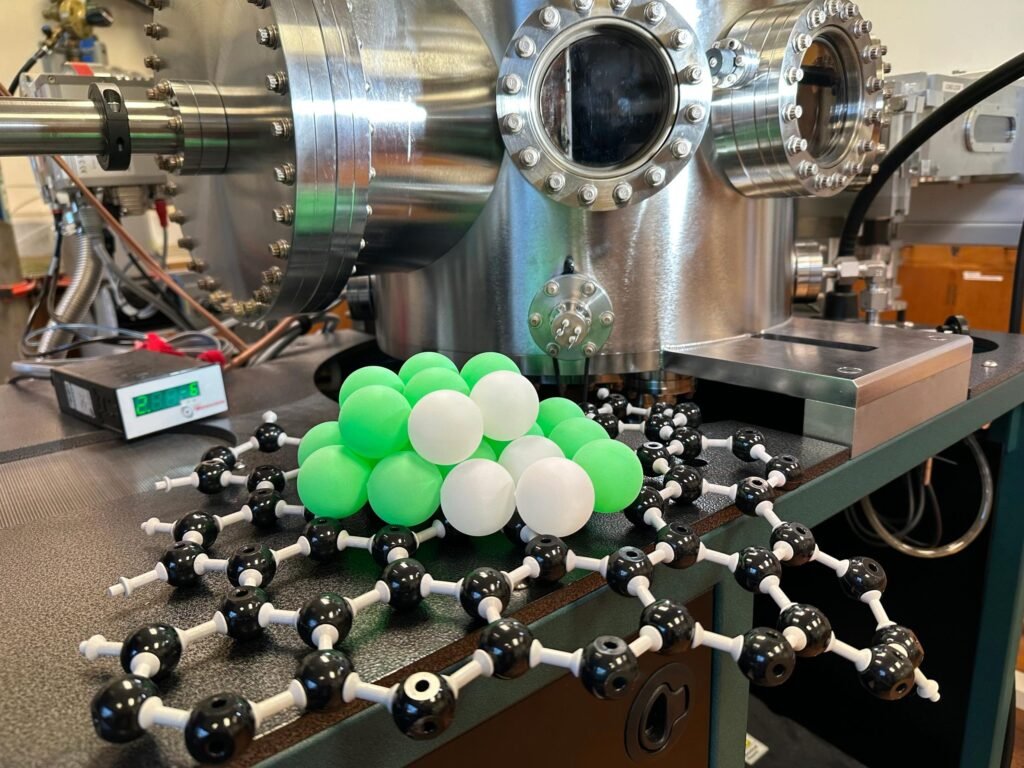Has been developed a catalyst that can produce hydrogen from ammonia, for clean energy generation.
Source: SciTechDaily
Scientists have developed a groundbreaking catalyst for generating hydrogen from ammonia that becomes more effective with continued use. By analyzing the atomic structure, they identified key changes that enhance its performance over time.
A collaborative team from the University of Nottingham’s School of Chemistry, along with researchers from the University of Birmingham and Cardiff University, created a novel material made of nanosized ruthenium (Ru) clusters embedded in graphitized carbon. These Ru nanoclusters react with ammonia, catalyzing its breakdown into hydrogen and nitrogen — a crucial step toward producing green hydrogen. This innovative work is detailed today (January 9) in Chemical Science, the flagship journal of the Royal Society of Chemistry.

With its high volumetric energy density, ammonia holds promise as a zero-carbon energy carrier that could drive a sustainable new economy in the near future. Finding fast and energy-efficient methods to crack ammonia into hydrogen (H₂) and nitrogen (N₂) on demand is essential. While catalyst deactivation is common, it is rare for a catalyst to become more active with use. Therefore, understanding the atomic-level mechanisms behind changes in the catalyst activity is critical for designing the next generation of heterogeneous catalysts.
Dr. Jesum Alves Fernandes, an Associate Professor in the School of Chemistry, University of Nottingham, and co-leader of the research team, explained: “Traditional catalysts consist of nanoparticles, with most atoms inaccessible for reactions. Our approach starts with individual atoms that self-assemble into clusters of a desired size. Therefore, we can halt the growth of the clusters when their footprints reach 2-3 nm-squared, ensuring that the majority of atoms remain on the surface and available for chemical reactions. In this work, we harnessed this approach to grow ruthenium nanoclusters from atoms directly in a carbon support.”
The researchers employed magnetron sputtering to generate a flux of metal atoms for constructing the catalyst. This solvent- and reagent-free technique enables the fabrication of a clean, highly active catalyst. By maximizing the catalyst’s surface area, this method ensures the most efficient use of rare elements like ruthenium (Ru).
Researchers discovered that ruthenium atoms initially disordered on the carbon surface rearrange into truncated nano-pyramids with stepped edges. The nano-pyramids demonstrate remarkable stability over several hours during the reaction at high temperatures. They continuously evolve to maximize the density of active sites, thereby enhancing hydrogen production from ammonia. This behavior explains the unique self-improving characteristics of the catalyst.
This invention marks a major advancement in understanding the atomistic mechanisms of heterogeneous catalysis for hydrogen production. It paves the way for developing highly active, stable catalysts that use rare metals sustainably by precisely controlling catalyst structures at the nanoscale.
The University of Nottingham is dedicated to championing green and sustainable technologies. The Zero Carbon Cluster has been recently launched in the East Midlands to accelerate the development and deployment of innovation in green industries and advanced manufacturing.

